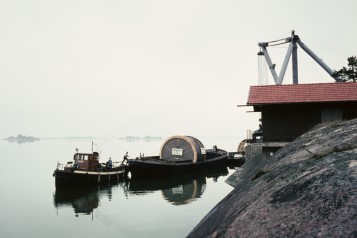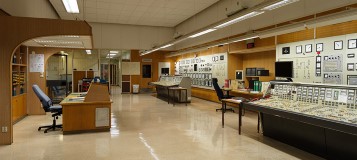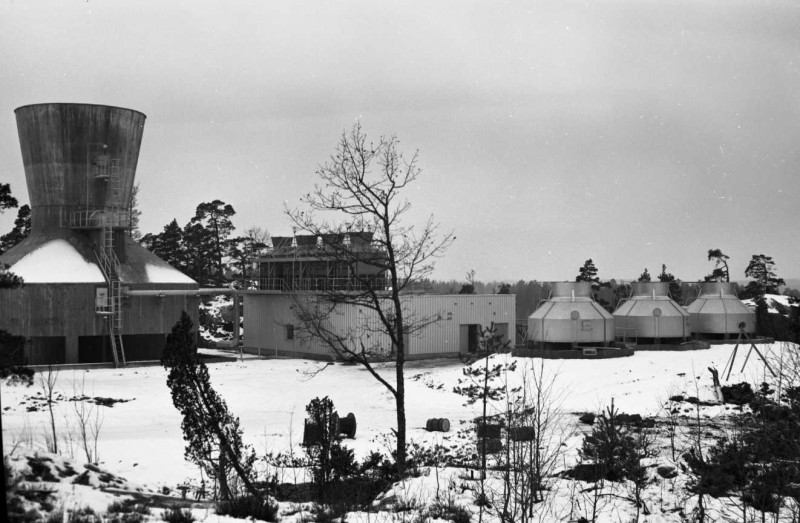
The Swedish line
There was huge optimism for the future in Sweden after the Second World War and confidence in Swedish technical solutions was strong. It was in this environment that 'the Swedish line' emerged. In other words, how Sweden could benefit in the future from the promising atomic energy.
Following the Second World War, Sweden, having stayed out of the war, was in a strong position. But Sweden had suffered indirectly by being cut off from the outside world. This had meant that the country had become dependent on domestically produced power – hydropower – for its energy supply. There was also significant political consensus that Sweden should continue to defend its policy of neutrality. It was these two factors, the desire to be self-sufficient in energy supply and remain a neutral country, that laid the foundations for the Swedish line in the development of atomic energy.
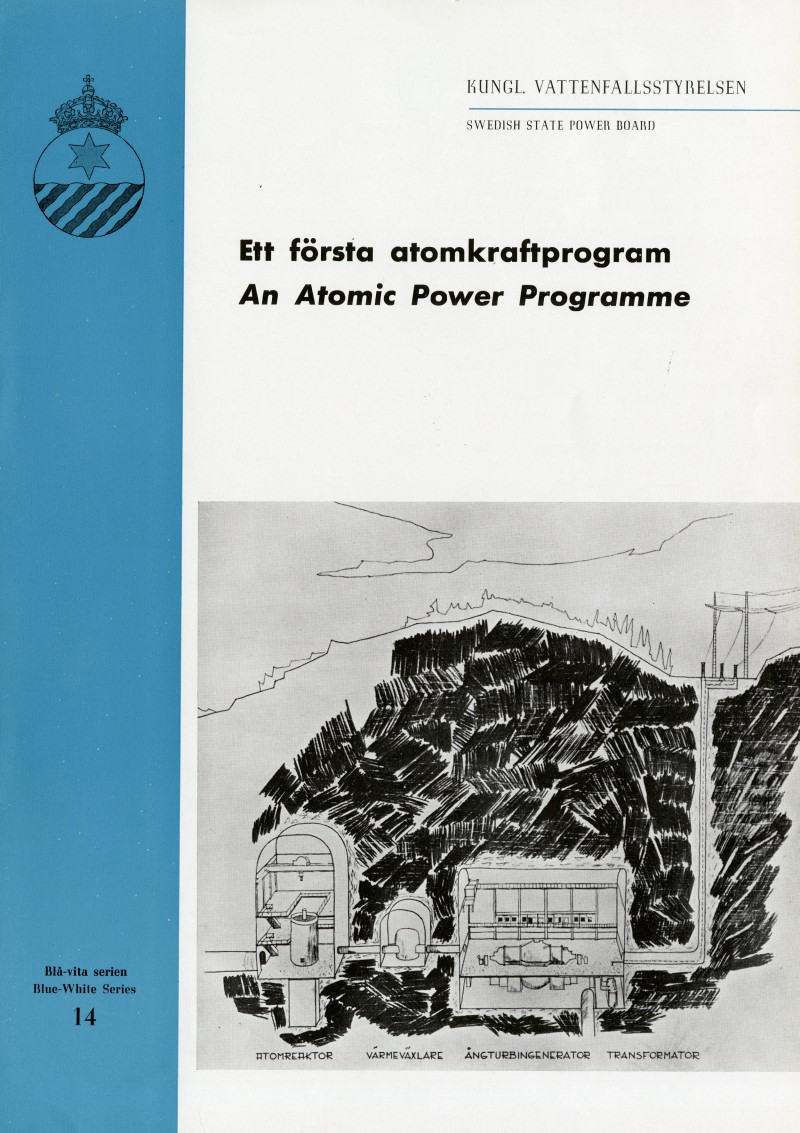
'An Atomic Power Programme in 1955'. The cover of a report published by the Swedish State Power Board. Year: 1955 | Place: - | Creator: Okänd | ID: VF001005
The significance of the Swedish line was to use domestic, not enriched, uranium and heavy water for production of atomic energy – or nuclear power as it came to be called in the 1970s. This would allow the country to maintain domestic energy production and have access to the plutonium that would make it possible to manufacture a Swedish nuclear bomb. Thus, there were both military and industrial policy incentives. Plans for a Swedish nuclear bomb were, of course, strictly confidential and known to only an extremely small circle of people.
Vattenfall, as a state-owned company, had a role to play in the development of atomic energy. In 1955, Atomkraftbyrån, the Vattenfall Nuclear Agency, was formed and Vattenfall planned to build two nuclear reactors. One, a thermal reactor named Adam, would be located in Västerås. The other, an electricity-producing reactor named Eva, was planned for Marviken in Östergötland.
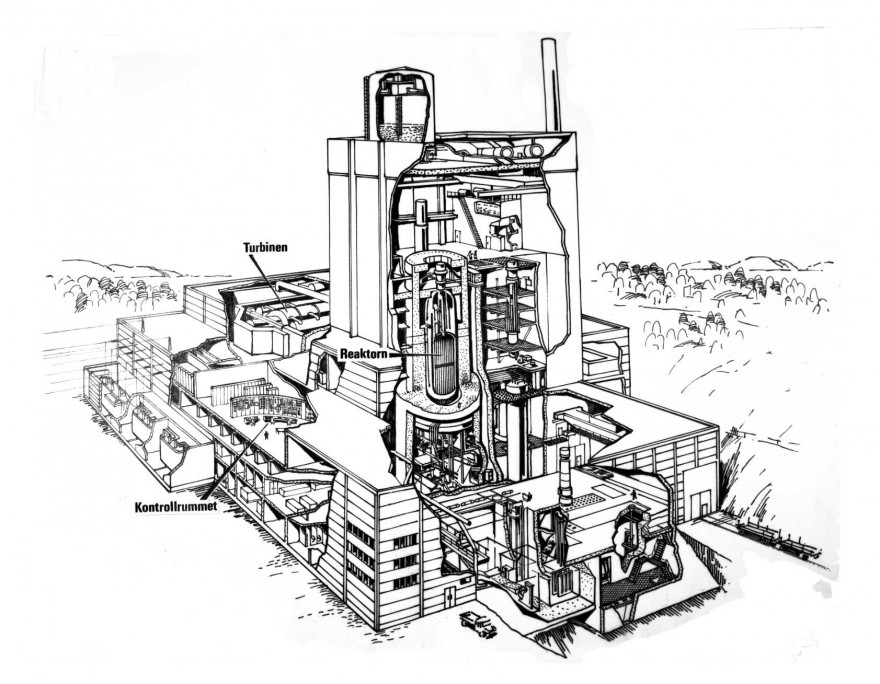
Marviken nuclear power plant Year: 1962 | ID: VF000033
But a semi-state-owned company, AB Atomenergi, also had similar plans. The company was founded in 1947 by the Swedish state (53 per cent) along with municipal and private companies to conduct atomic research work. The two parties' projects were merged, but on Atomenergi's terms because the company had greater favour with the minister responsible.
Adam was now constructed as an electricity and heat-producing plant in Ågesta south of Stockholm. In 1964, the Ågesta plant was ready for operation, but by then the budget had been exceeded significantly. The final cost was around SEK 175 million, against the original estimate of SEK 35 million. The Ågesta reactor was final shutdown as planned in 1974.
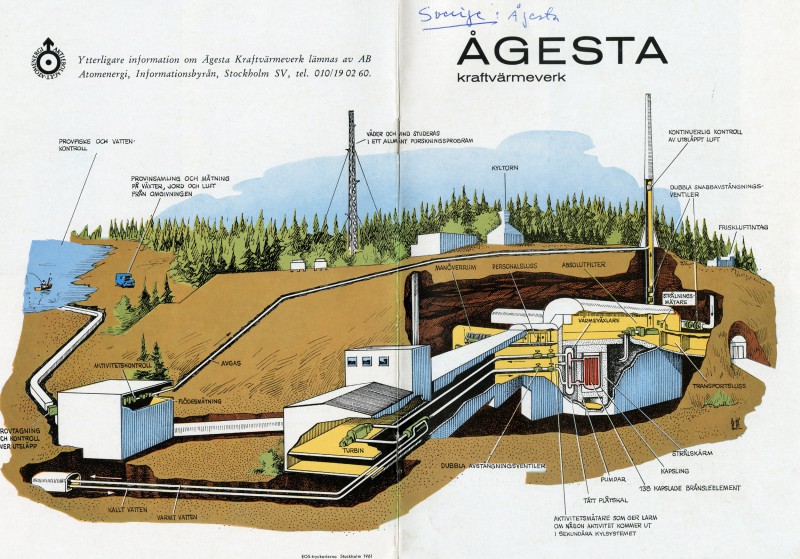
Ågesta nuclear combined heat and power plant. The cover of a brochure about the Ågesta nuclear power plant. Year: - | Place: Ågesta | Creator: Okänd | ID: VF001020
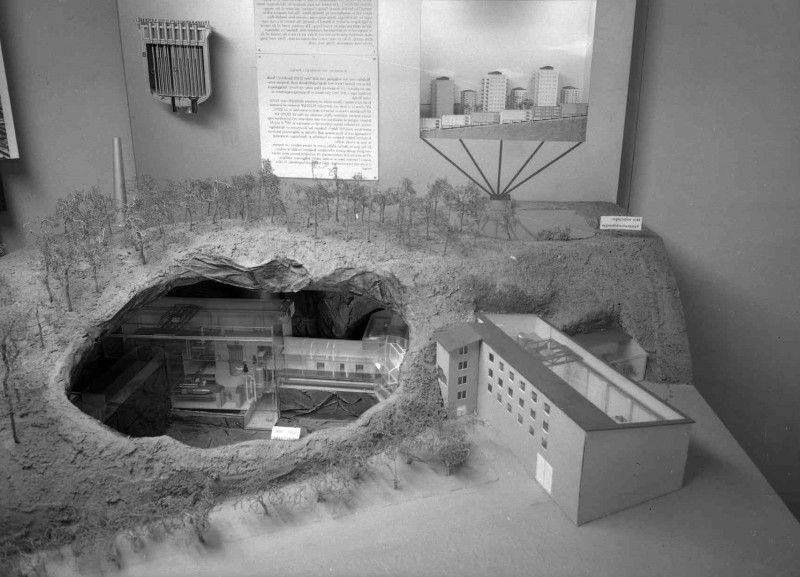
Ågesta nuclear combined heat and power plant. A model of the plant. Year: 1960 | Place: Ågesta | Creator: Vattenfall | ID: VF000031
Construction of the second reactor, Eva, began in Marviken in 1965 and this was also a heavy water reactor. This was also a partnership between Vattenfall and AB Atomenergi. Asea was responsible for most of the construction work. This allowed the company to build up valuable knowledge that it would use when it started developing its own light water reactors.

Ågesta nuclear combined heat and power plant. Year: 1964 | Place: Ågesta | Creator: Vattenfall | ID: VF000032
The Swedish line is abandoned
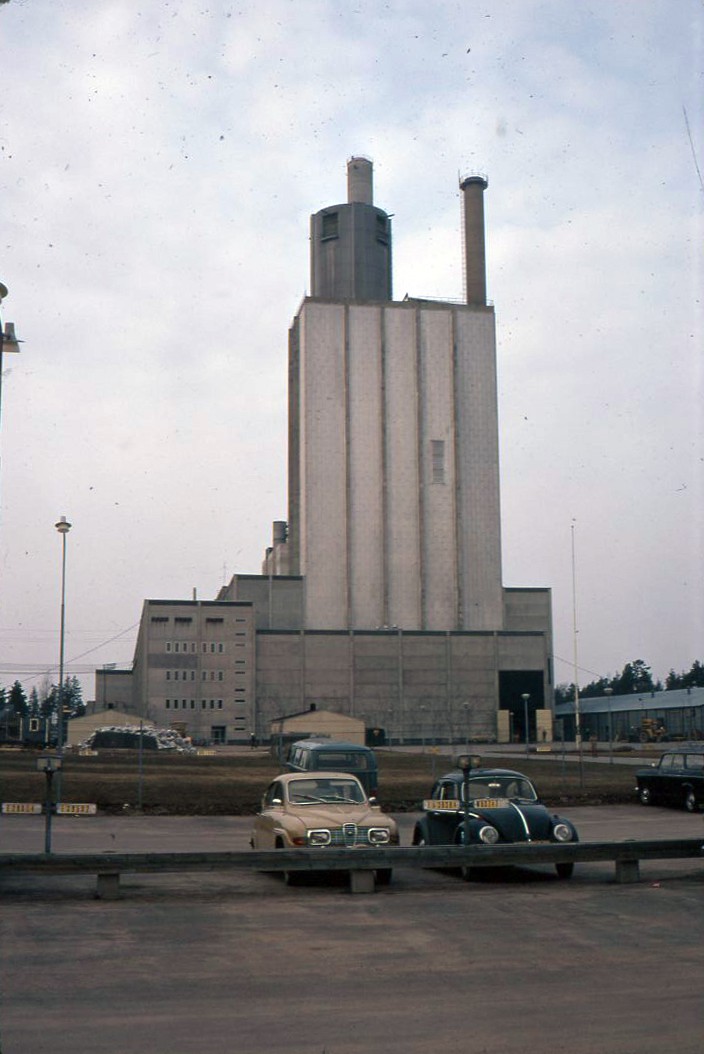
Marviken nuclear power plant. Exterior of the plant. Year: 1974 | Place: Marviken | Creator: Vattenfall | ID: VF000034
However, Vattenfall became increasingly sceptical about Marviken. There was a risk that the plant, like Adam, would end up being much more expensive than estimated. Construction work also took longer than planned. In order to keep costs down, in 1962 AB Atomenergi changed to a new technical solution involving a boiling-water reactor with superheated steam. This technology had never been tested in practice, and also required the use of enriched uranium. It also involved, therefore, a departure from 'the Swedish line'.
The technical problems that continually arose and various delays made Vattenfall increasingly critical of Marviken and the Swedish line. Vattenfall felt that the future belonged more to light water technology. The private power industry had already ordered a reactor using this type of technology from Asea in 1965. For its first in-house nuclear power plant, Ringhals, Vattenfall chose this particular technology in 1968.
The technology at Marviken became more and more complicated and criticism grew louder. Finally, it was clear that the reactor risked becoming unstable and the project was cancelled in 1970. This decision was the death knell for 'the Swedish line'. The global situation had also changed at this point. Sweden, for example, had ratified the Non-Proliferation Treaty in 1968, which meant that a Swedish atomic bomb was completely out of the question. Marviken never produced any nuclear energy for commercial use. Instead, it became the world's only oil-fired nuclear power plant, and was commissioned in 1974. The attempt to unite divergent political, technological and business interests in the case of Marviken proved to be a significant failure.
Video player requires marketing cookies.
To view this content please click here to allow marketing cookies.
Marviken and nuclear plans for the future (in Swedish)
Video player requires marketing cookies.
To view this content please click here to allow marketing cookies.
Vattenfall's Director General Åke Rusck explains Vattenfall's nuclear plans in 1955 (in Swedish)

